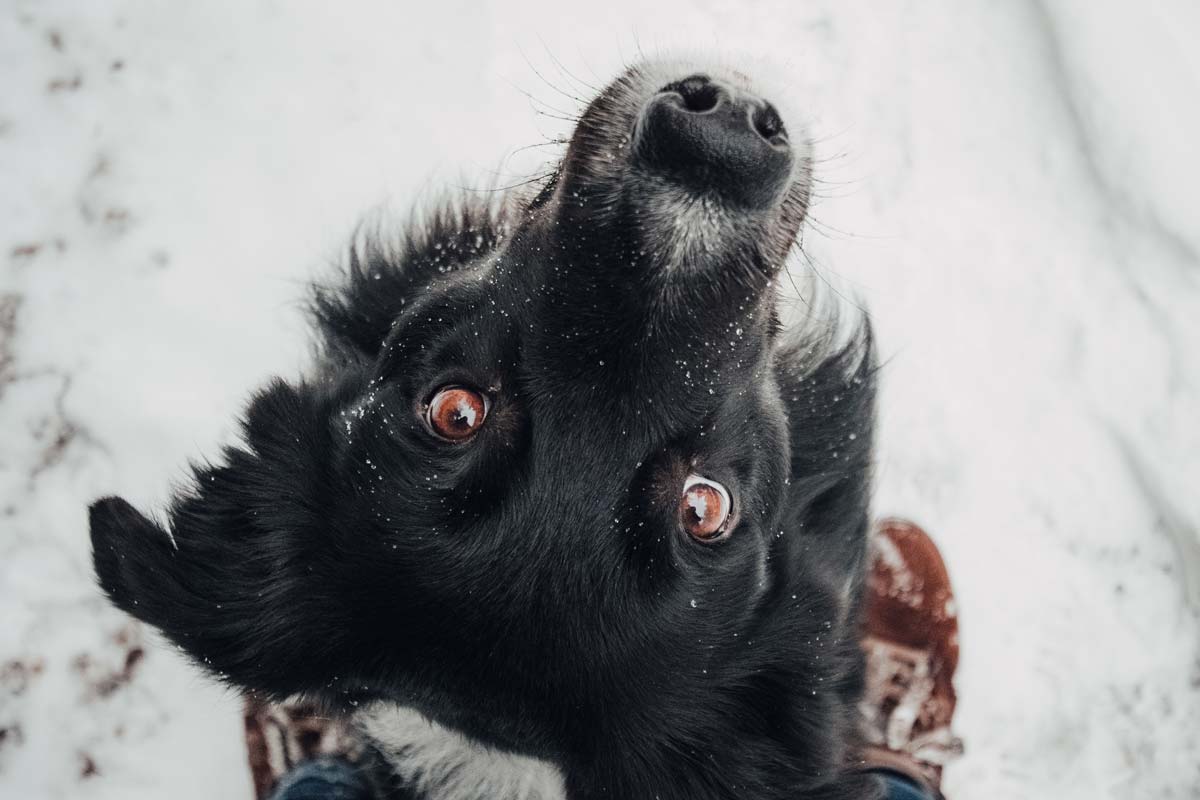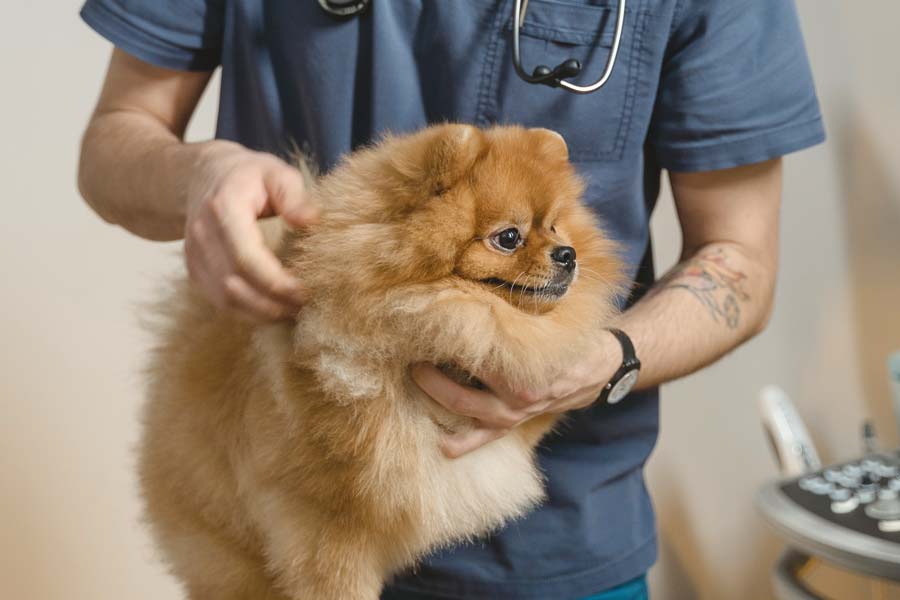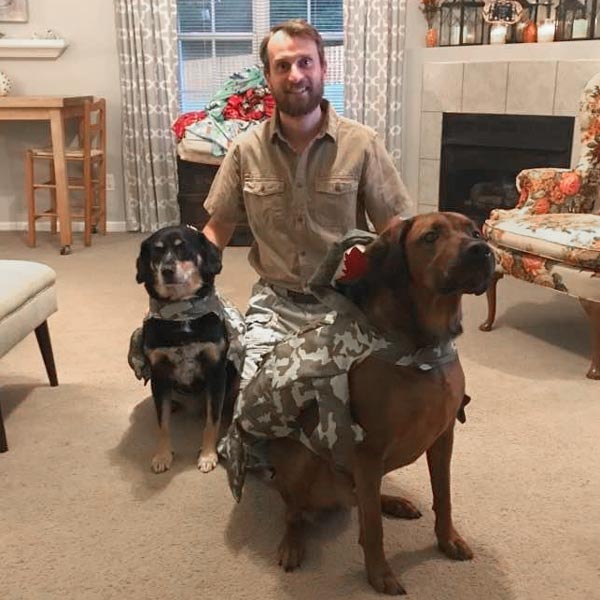What Is Training?
What is training? How do I define what training my dog looks like? As a youngster, if asked this question, my mind would go straight to a memory of watching a video special of the Ringling Brothers and Barnum & Bailey Circus.
The tiger trainer was using a whip-like rod and a stern voice to direct the majestic cats through rings of fire. Maybe you would imagine a trainer in a wetsuit cueing a black and white porpoise to jump through the air, followed by a piercing whistle and a stinky fish.
These are indeed both examples of animal training, but not necessarily the type of training needed to teach your dog to water the lawn outside or play dead as a neat party trick. The fact of the matter is, every interaction you have with your trusty, furry friend is a training session.

Do you give your dog a bowl of food every day? Do you give them head scratches when they come up and nuzzle your hand? When your pup gives you the dazzling jump-and-spin pee-pee dance of their life, do you let them outside? Guess what, those are all training sessions.
It does not have to be a literal dog and pony show with clickers and whistles and a treat pouch. Now, do not get me wrong, Karen Pryor’s clicker training expo is a fantastic program and resource. I love her book Don’t Shoot the Dog, and I recommend it to everyone who is starting out training for the first time. However, training is not always a formal affair.
How Do I Know When I’m Training?
The next time you go to feed your dog, pay attention to what behavior they are presenting at the time of feeding. Are they sitting? Wagging their tail? Jumping up and down? Whatever behavior you are observing, it has probably been reinforced by you feeding them. I bet you did not think that was a training session, did you? Our pets are always learning something from our interactions with them, whether they are intentional or not.
I remember when my wife and I got our first puppy together (great trial run for kids, no?). We were trying to crate train with him, and he did not like sleeping in his crate at night. He wanted to be right there in the bed with us. He would whine and do what we all know as the Rhodesian yodel.
I wanted us to hold out and let him get his cries out. Again, I would do this a little differently now. However, my wife could not stand the “calling for mommy” cries and would go let him out after the longest, loudest yodels. Well, can you guess what we inadvertently trained? Yes, if I yodel loud and for a long time, mommy will come get me.

Arthur "Artie" Fitzgerald Patterson
This was not a formal training session, and my wife didn’t think she was necessarily influencing behavior, but indeed she was. To this day, Arthur Fitzgerald tries to find himself sleeping in our bed. With every interaction, we are giving our pets information. And, if we pay attention, we should be learning something, too.
What’s the Magic Dog Training Secret?
The secret to training our fur babies (yes, I am going to tell you in the first article) is understanding that training is about two-way communication. You communicate something to your fur baby, and in turn, your pet communicates something back to you.
It is a two-way street. If we are constantly trying to only give “commands” and expect behavior in return, then we fail to understand what training is all about. If I ask my dog to sit, and he doesn’t sit, I shouldn’t automatically assume he is being defiant or trying to pull one over on me. I should try and understand why he is not sitting. He is trying to tell me something, but what is it?

Let us look to the environment. This is always a great place to start. We are inside the house, and normally I ask him to sit in the living room. However, today I am asking him to sit in the kitchen. Uh-oh, I just realized something, the living room is carpeted, and the kitchen has tile! Poor buddy did not want to sit his bottom down on the cold surface, and I cannot say that I blame him.
How do we know this is the case? Well, let’s test it. Call him into the living room and ask him to sit. If he sits, we can assume that it may have something to do with the kitchen and/or cold tile.
Is 100% Obedience Necessary?
Now, you may be telling me, if Fido is trained, then he should sit no matter where we are located - and on any surface, even if it is cold as a glacier. My question in turn is, why? Is it necessary for your dog to sit on an ice-cold floor just because you asked? What is the purpose of that?
Training is two-way communication. You are communicating to your dog (especially if they hesitate, and you insist) that you do not care that you are asking them to sit on a cold floor - do it anyway. These are instances where I start to see behavior breakdown, and the dog starts to lose trust in his or her owner.

It is easy to fall into labeling our pets when they do not do what we ask them to do. Fido will not sit; he is stubborn. Rex will not fetch the frisbee; therefore, he must be lazy. Spike chewed up my blue suede shoes; he is a bad dog. Labeling our dogs "lazy" or "bad" does not help us understand or resolve behavioral issues. It may make us feel somewhat better in the moment when our patience runs out.
The truth is, your dog is not a good dog either! There, I said it. Good, Bad, Ugly: these are just descriptors that, when put together, make a great 1966 western. But when they are used to describe our furry companions, they just hinder us from understanding their behaviors’ meaning.
These labels can lead to circular reasoning. "My dog is aggressive." Okay, why is your dog aggressive? "Because he nips at me." Why does he nip at you? "Because he is aggressive." Wait, what?
It is more useful to look at what is being communicated. My dog nipped at me. What was going on right before he nipped you? Oh, I was taking away the cat food because he was getting into it. Ah, so maybe he nipped because you were taking the cat food away.
Now we can make a plan as to how we can avoid this scenario. Maybe offer the cat food out of reach somewhere, or offer your dog a treat to call him away from the cat food bowl so you can safely retrieve it. Seems simple enough, right? Well, because it is.
Then why do we not so readily do these actions in the first place? It takes practice. It takes time to recognize these behaviors, understand why they may be occurring, and then respond in kind. It is about taking notice of those interactions that are really training sessions, even if they do not seem to be.

Is Good Two-Way Communication the Secret to Good Animal Training?
In short, yes. Start by not assuming your pet is something – “he is stubborn; she is shy.” Instead, observe what behaviors your pet is giving you. This is their way of communicating.
Try to analyze and predict why those behaviors are occurring and respond with a change in your behavior and actions. Hey Fido, come over to the living room. The carpet is warmer, and you can sit your bum here instead of on the cold tile.
I make light of the situation with the cold tile scenario, but this technique can be used to help with potty training, voluntary nail trimming, walking easy on the leash, and all kinds of other useful behaviors. Take notice of those moments where you think you aren’t training, because in actuality, you are.




